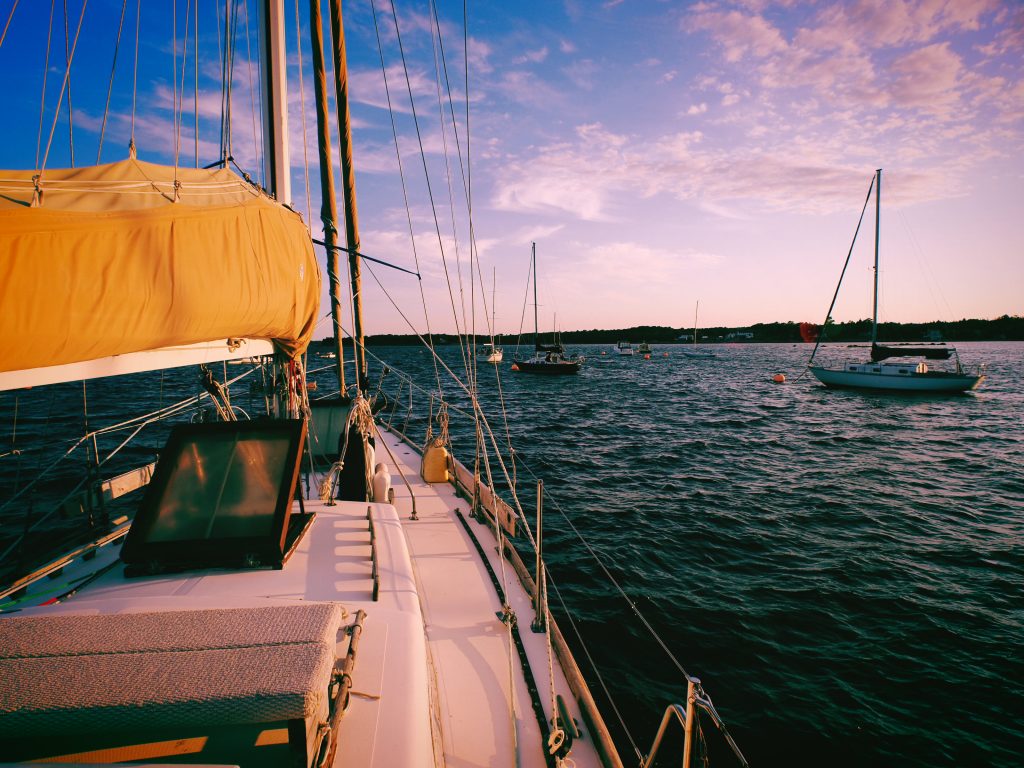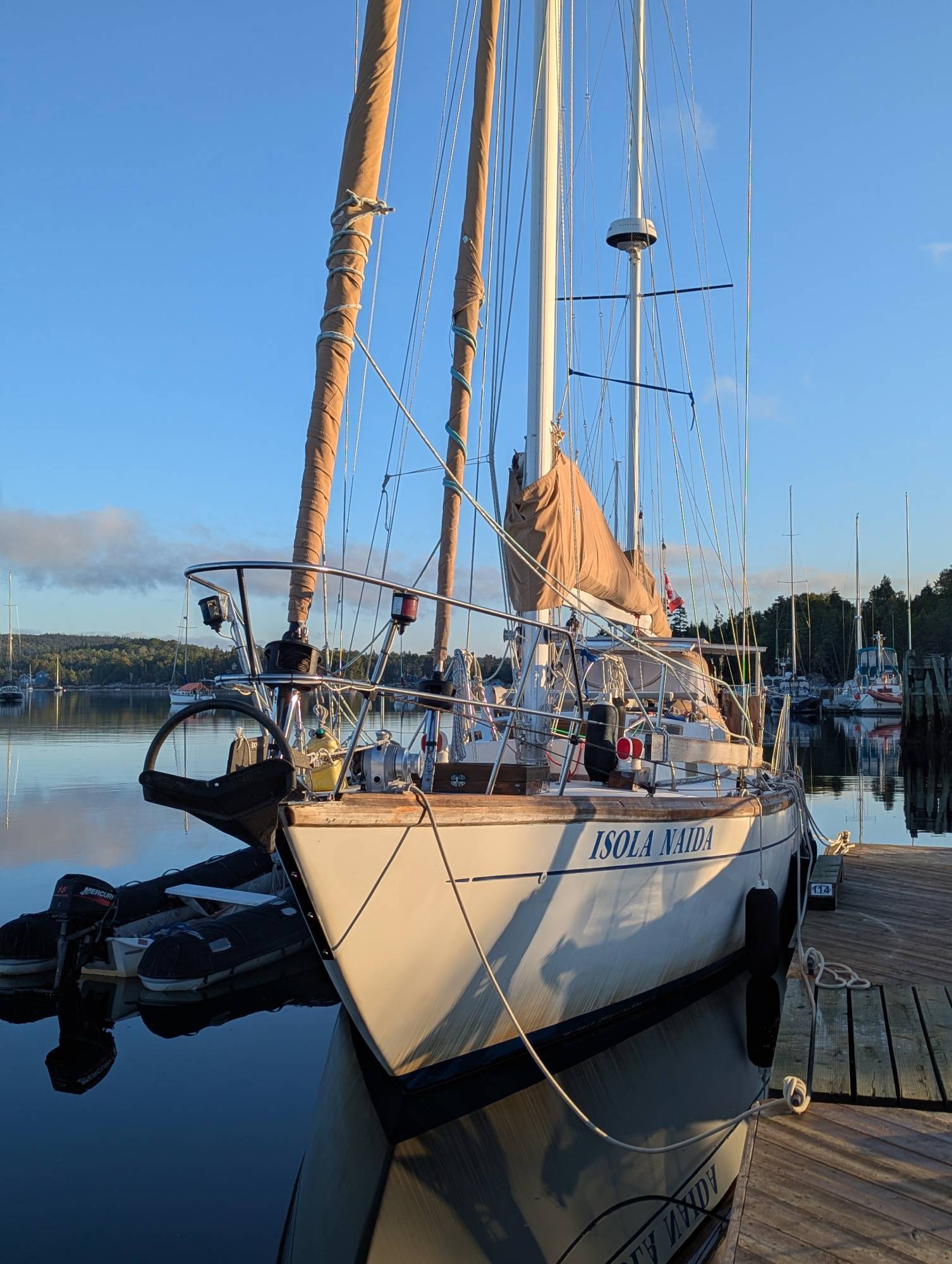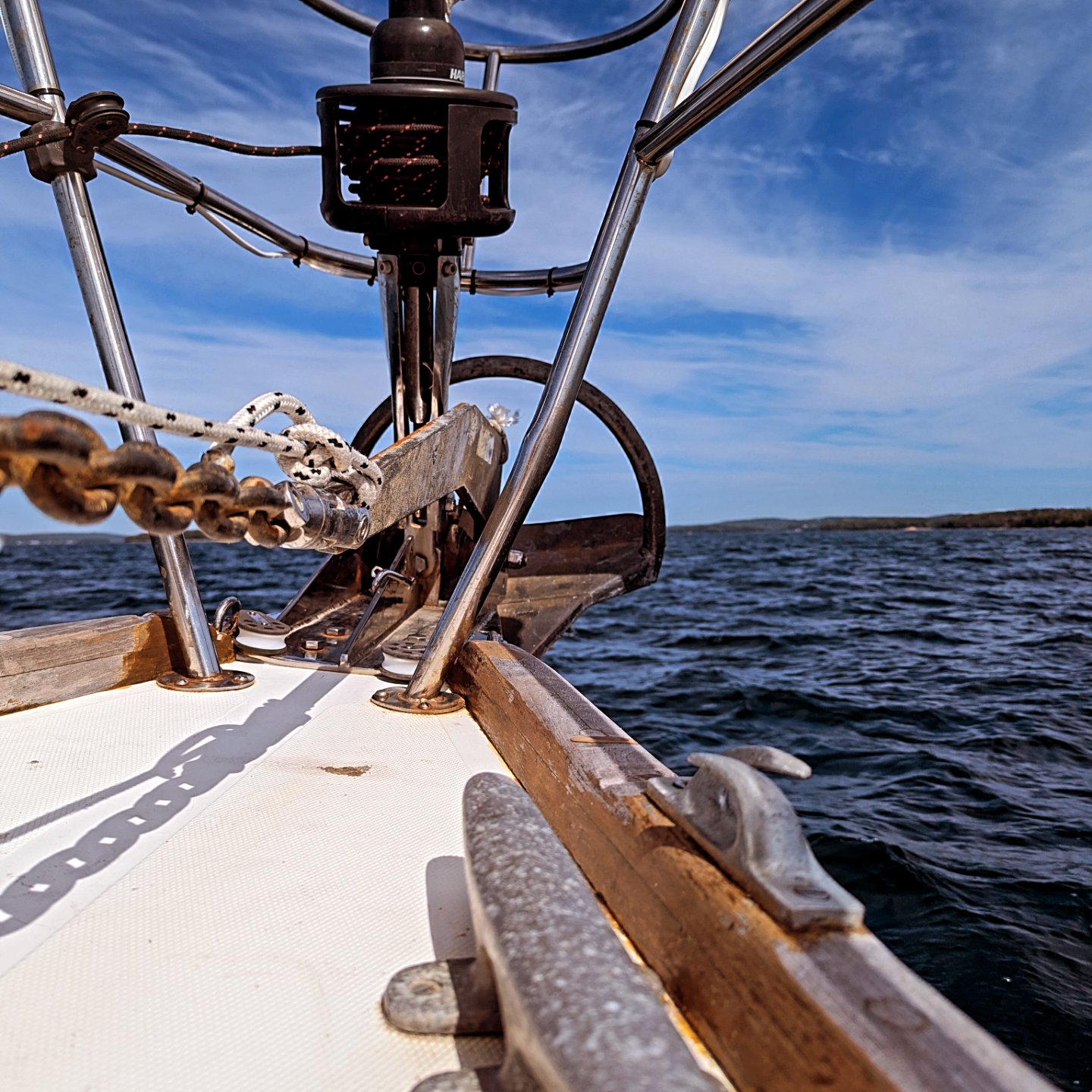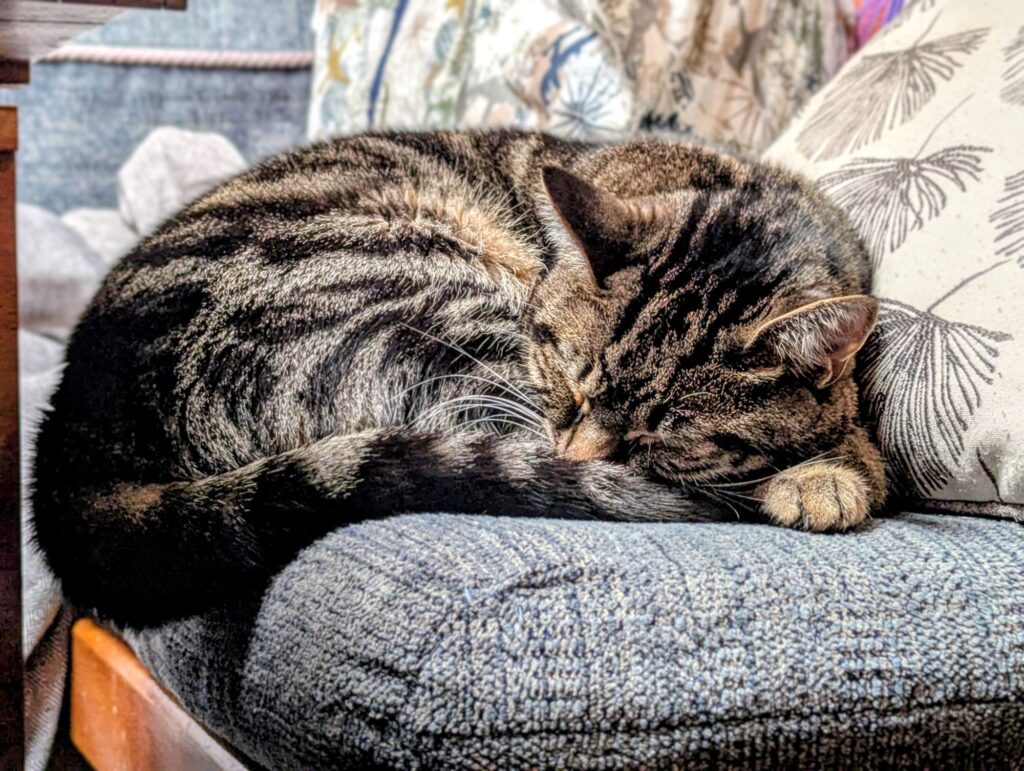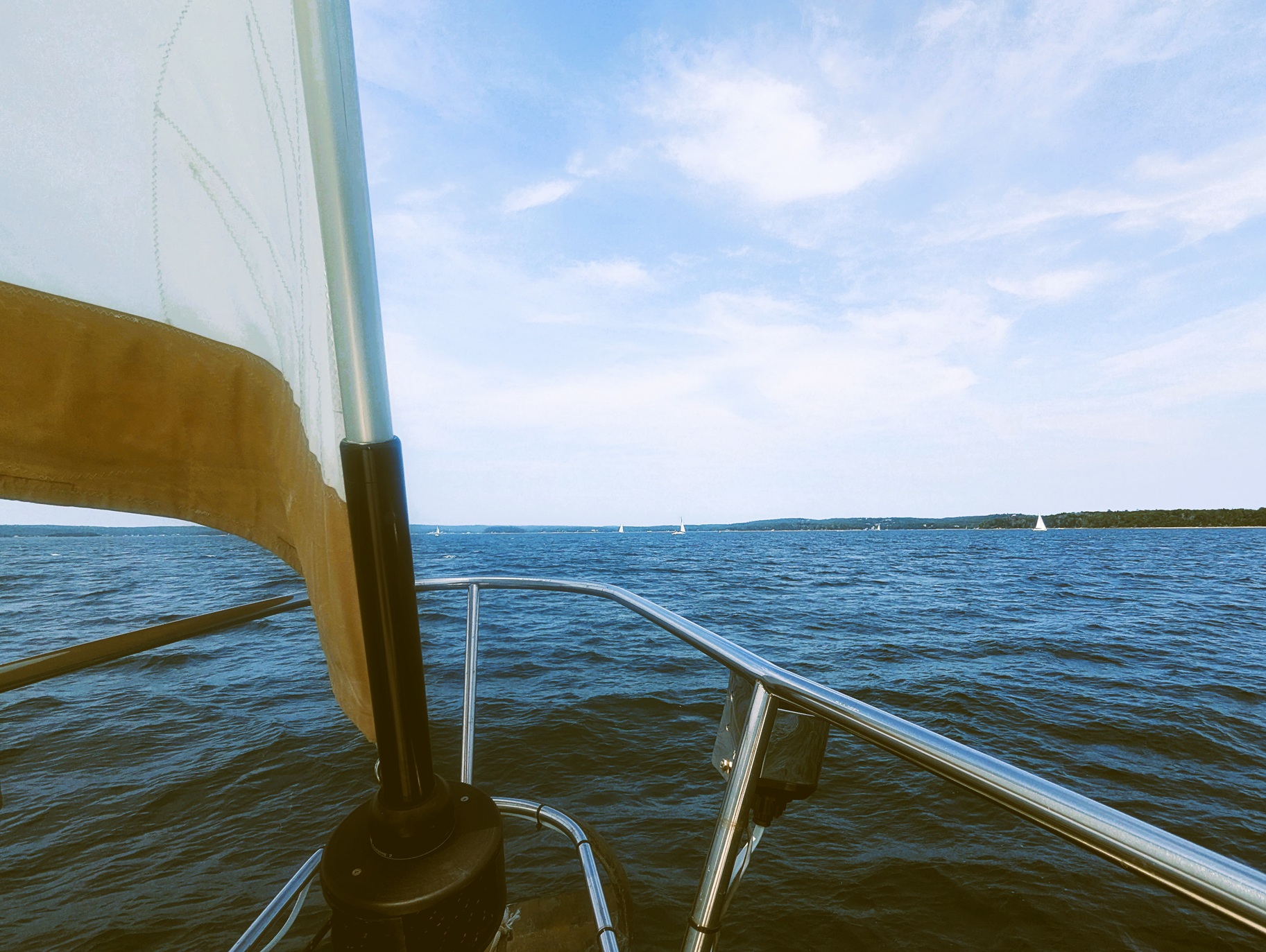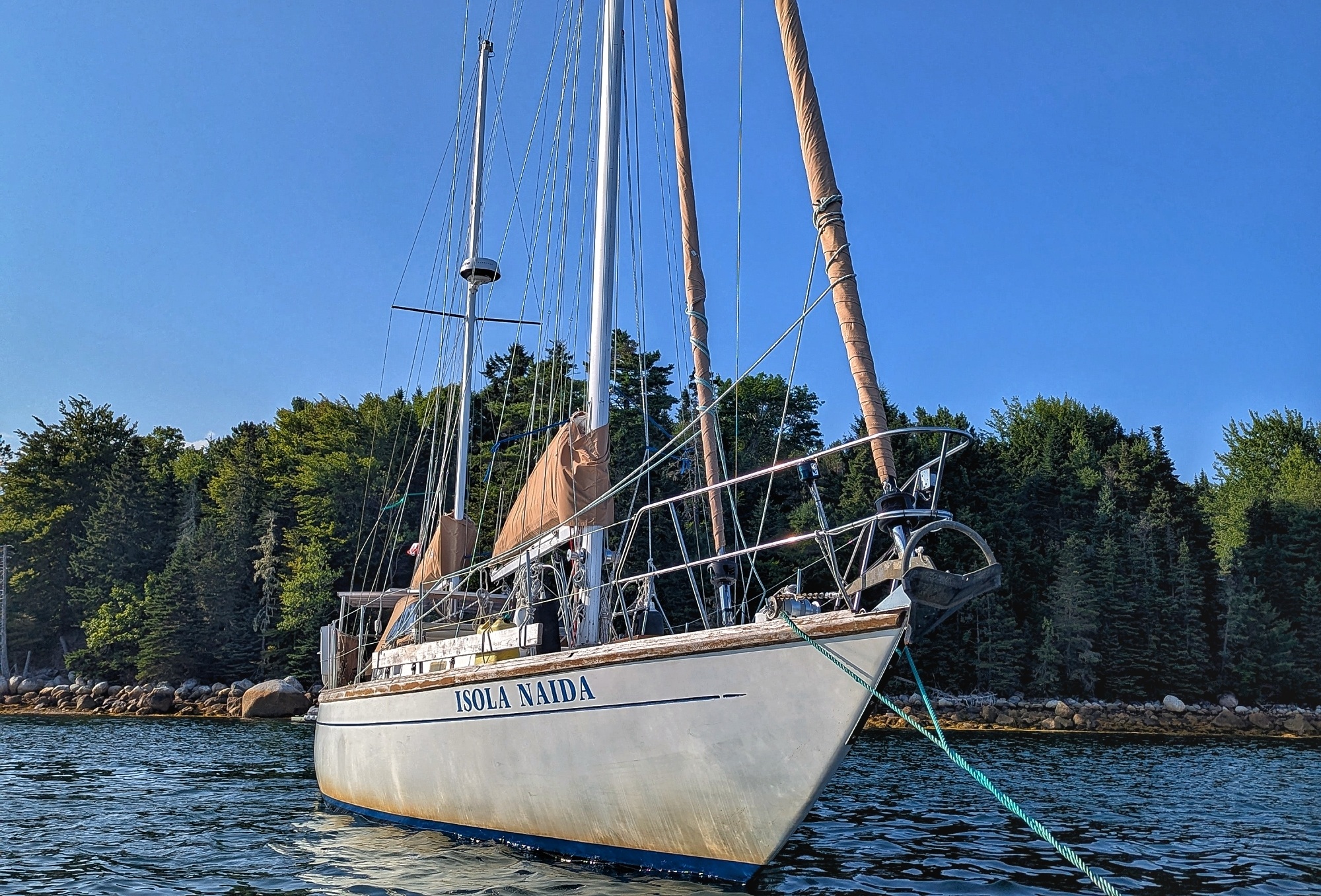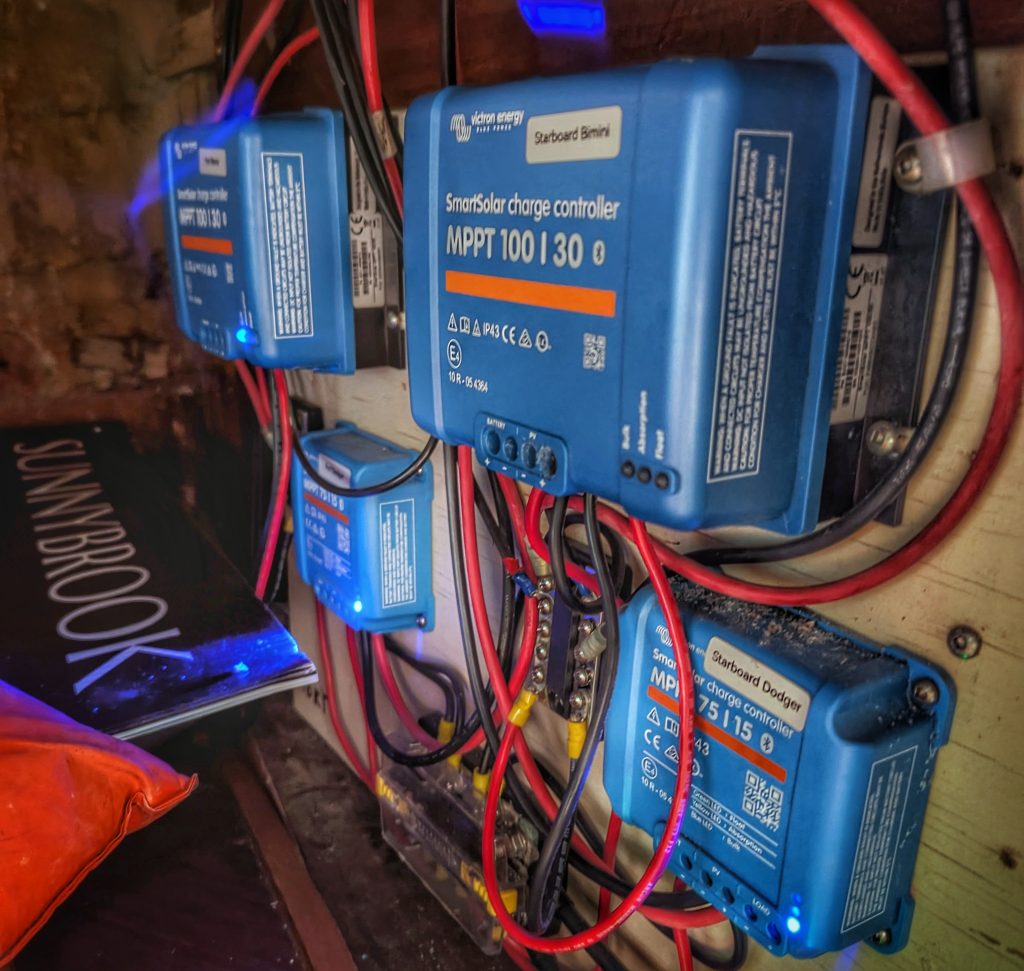We knew shortly after buying Isola Naida that we would need to haul out in order to address some of the work we wanted to accomplish onboard. This past weekend, that time finally came. We brought Isola Naida around Mahone Bay from her summer mooring at South Shore Marine to East River Shipyard, where D’Arcy works. Just like that, the chapter on our first summer aboard comes to a close, while a new chapter of projects and maintenance begins.
Update on Noelle’s Injury
If you follow us on Instagram or Facebook, you know that at the end of August, Noelle injured her back. After a long night in the ER, she was diagnosed with radiculopathy—a pinched nerve. Her injury has kept us ashore since our last sail on 24 August, and recovery has been a slow process. . While she wasn’t able to make the trip around to East River, she’s been cheering from the sidelines and looking forward to being back on the water once she’s healed.
Departing South Shore Marine
On Sunday, D’Arcy teamed up with his friend and coworker, Matt, to bring Isola Naida down the coast. The forecast called for a steady 5kt southerly breeze – not enough to sail with – so the passage would be under power.
Isola Naida set off from South Shore Marine under fair conditions and motored out into Mahone Bay. The most careful navigation of the day came as we passed north of Big Gooseberry Island, where the peninsula extends well underwater, leaving only a narrow channel of deep water.
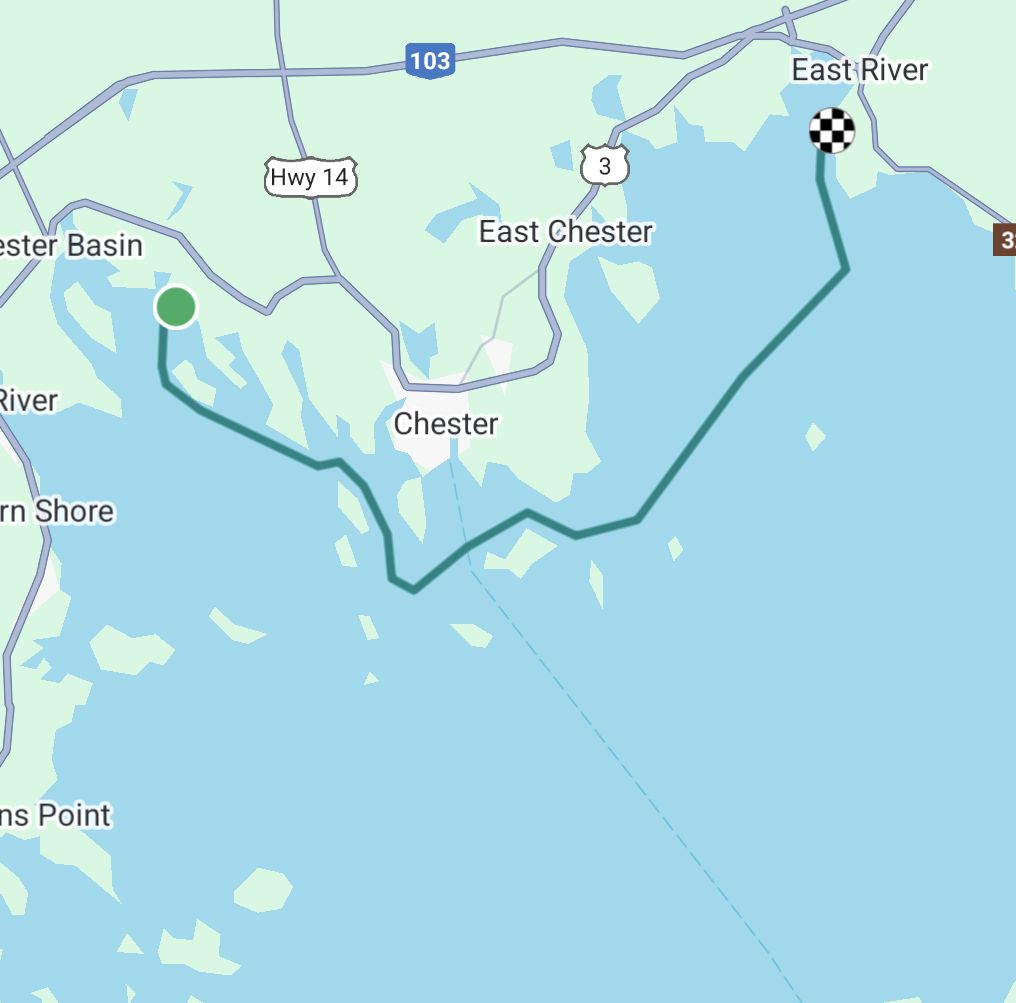
From there, we rounded the Chester Peninsula, passing north of Meisner’s Island and skirting the Chester Golf Club. The route took us past a handful of shoals off Zincks Cove and Graves Island. We crossed over Western Lobster Claw Shoal, followed the buoy around Eastern Lobster Claw, and then had a nearly straight run past Graves Shoal to East River Shipyard.
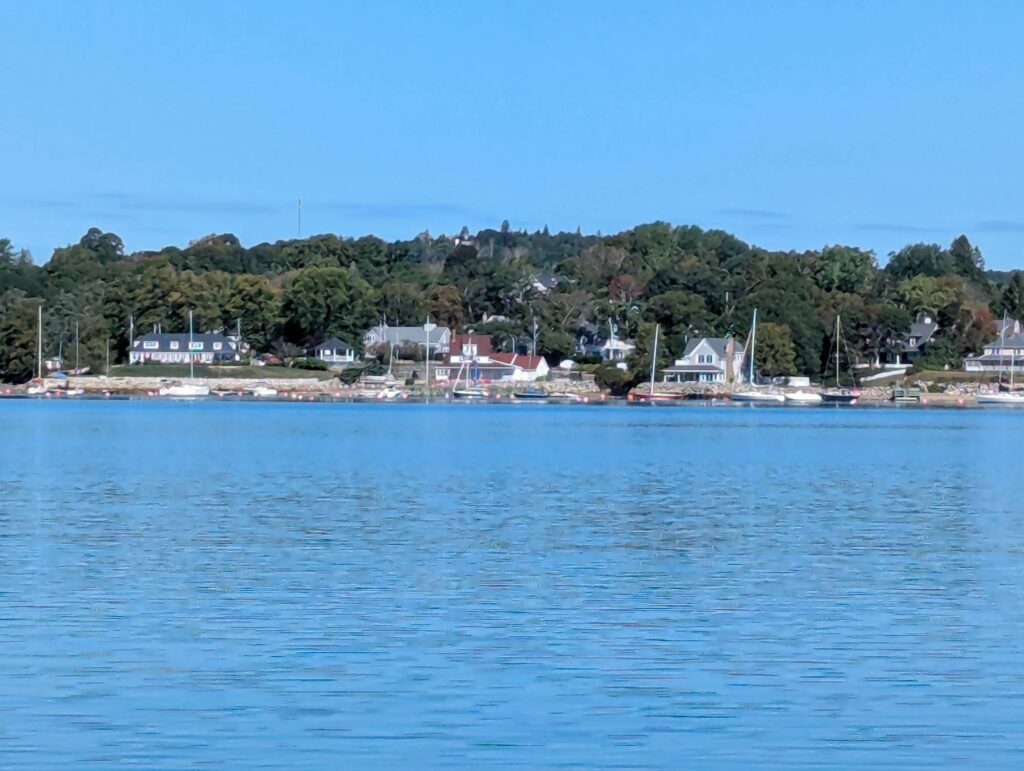
Arrival at East River Shipyard
After an easy passage, we arrived at East River Shipyard, where Isola Naida will be hauled out and spend the coming months on the hard. The yard was quiet on Sunday afternoon. We prepared docking lines and fenders as we approached the breakwater, shifting the dinghy we had in tow from the port to the starboard side. Rounding the mooring field north of the yard, we came alongside on Isola Naida’s port side. With calm seas and no wind, docking went smoothly.
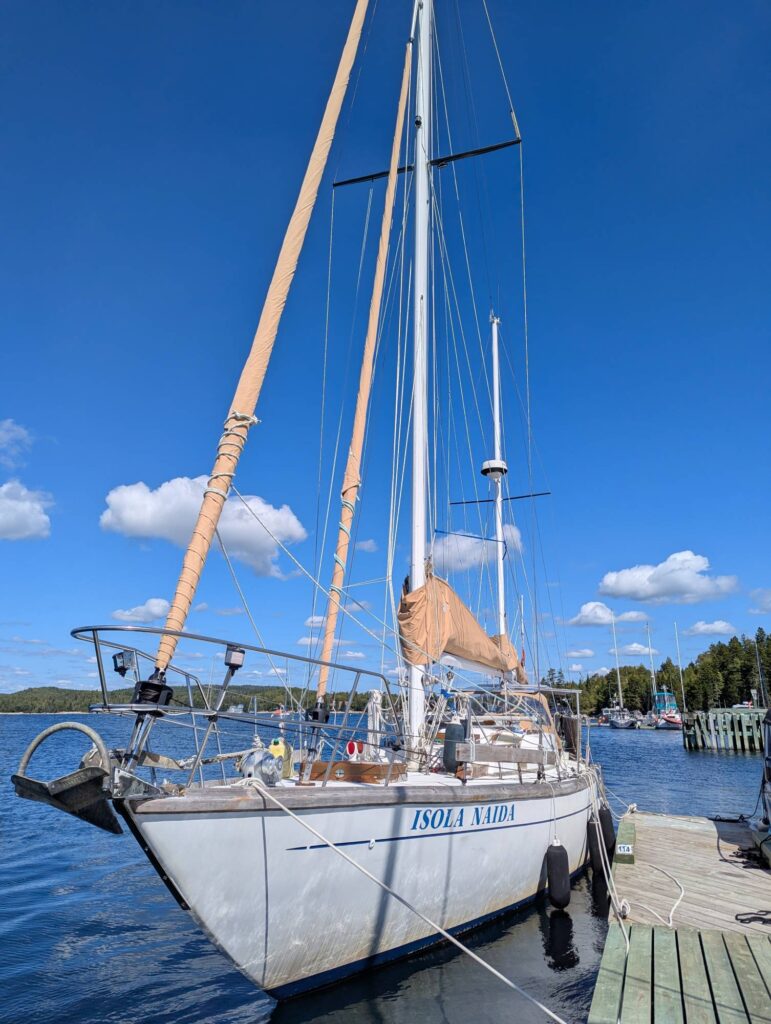
Reflecting on Hauling Out
While it’s always bittersweet to haul a boat out of the water, it is an exciting milestone for us. We’ll finally be able to tackle the projects we’ve been planning since we first bought her—both maintenance and upgrades which are difficult to complete while afloat.
As we settle into haul-out season, we’re looking forward to tackling the projects that will carry Isola Naida into next year stronger than ever. Stay tuned as we share updates from the shipyard and the behind-the-scenes work that keeps a classic ketch like ours sailing. If you’ve been through a haul-out yourself, we’d love to hear your best tips or stories in the comments — and don’t forget to follow along on our blog and social media for the latest updates.

